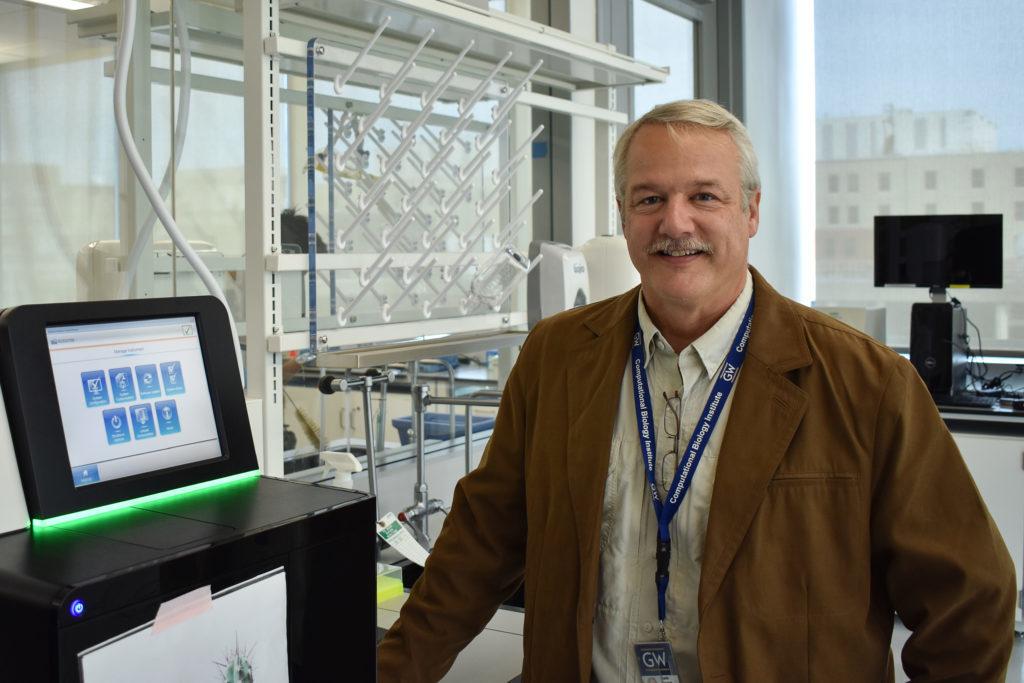This story is part of The Hatchet’s semester-long project sharing stories of GW’s faculty members at the forefront of researching the COVID-19 pandemic.
Keith Crandall, the founding director of the Computation Biology Institute at the Milken Institute School of Public Health, has been working to create infrastructure to house COVID-19 patient data, like symptom logs and the number of hospital visits, from the GW Hospital for use by GW’s researchers.
Crandall said he’s merging the data he gathers with the National Institutes of Health National Cohort Collaboration, a national project that compiles COVID-19 patient data, for researchers to use in their work. He said hospitals typically have strict regulations that prevent medical data from being released to the public, but the pandemic revealed a need for this type of data – unaccompanied by patient identifiers – to be released.
Crandall said he’s signed legal agreements with the hospital to access patient information, like their age and time of visit, without identifying the patient. He said hospitals typically can’t legally share this information with the public for privacy reasons.
“Normally hospitals are a bunch of independent organizations that really have a hesitance to share any data whatsoever,” he said. “It’s hard even as a patient to get my own data out of a hospital, right?”
He said part of his research money, provided through the University’s internal COVID-19 research fund, has been used to purchase the computer to house the data, which GW researchers can access through the University’s server. He said his data-aggregating process involves moving the data securely from the GW Hospital to a “warehouse” within GW’s firewall and to then remove personal information, like a patient’s address, social security number and birth date, to ensure privacy.
He said even without the identifying information, the data still provides researchers with valuable information, like complicating factors, drug therapies and whether patients were seen multiple times. He said the information can be useful for both clinical and genomic research.
Crandall said the added workload of conducting research on top of his teaching responsibilities can be “exhausting” to manage, but he enjoys doing both.
“I have a much more structured schedule in terms of dedicated time for writing on papers, dedicated time for working on grants,” he said. “I actually for the first time have blocked off noon to one for lunch.”
Crandall said he has also assigned his students projects relating to COVID-19, which has given him the opportunity to learn about the pandemic alongside his students.
“It has been good, but I miss the personal interaction with students,” he said. “There is just something fun about seeing students in a classroom, and it’s hard to see the lightbulb turn on with the students when you’re all on one screen.”
Crandall said it was “amazing” that the University was able to find the money to give to talented teams of researchers.
“I’m glad they have the foresight to get this started and the fortitude to get this finished,” Crandall said.
Nicholas Pasion contributed reporting.







